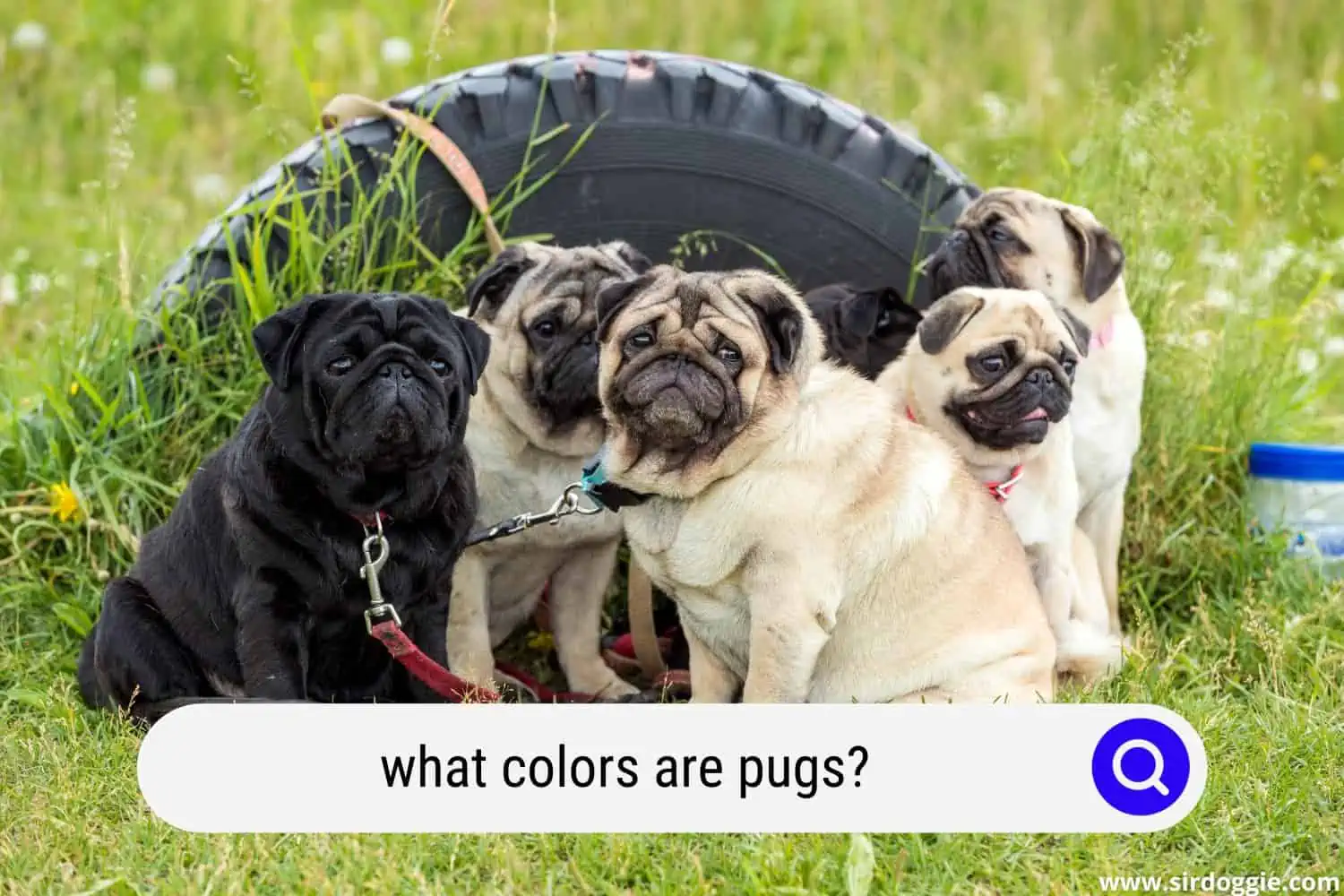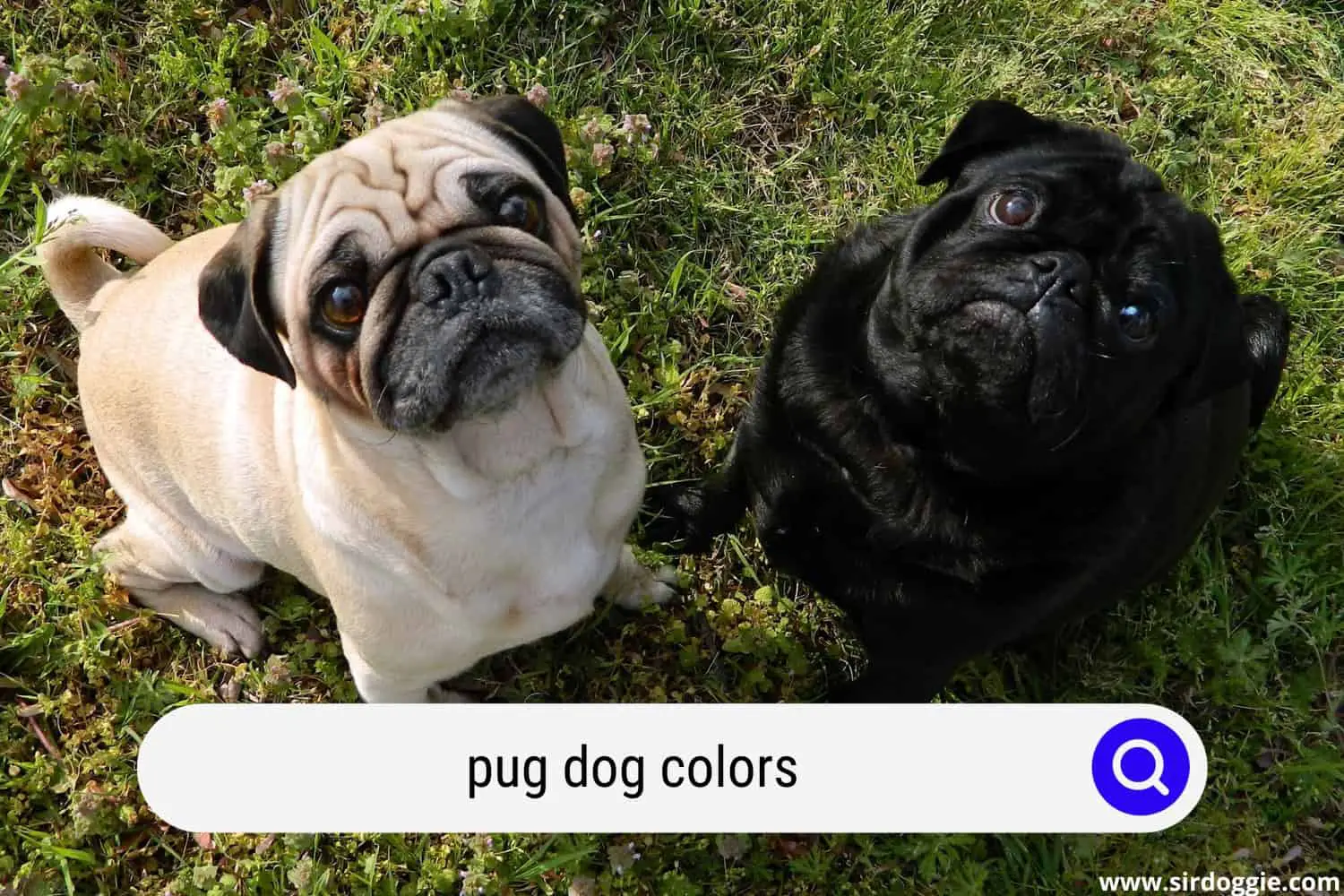What Colors Are Pugs?
Are you wondering what colors are Pugs? There are many different colors of Pugs, although the American Kennel Club and other Kennel clubs do not recognize them. Why is this important? For instance, only the dogs with colors that are recognized in the clubs are allowed to be registered and compete in dog shows. This article will help you to know what the different colors of Pugs are.

Do The Different Colors Of Pugs Matter?
When it comes to the American Kennel Club, the answer is yes. No matter what colors Pugs are, the (AKC) American Kennel Club only recognizes two colors to compete in the show ring. They are the black and the fawn Pugs. However, the AKC has allowed Apricot Pugs to be registered as a Fawn in order for them to be able to compete in the show ring.
The (CKC) Canadian Kennel Club will allow 3 different color Pugs to compete in their show rings. The (FCI) Federation Cynologique Internationale will also allow 4 colors of Pugs to compete as well as the (KC) Kennel Club of the UK.
What Colors Do Pugs Come In
In reality, however, the question remains. What colors are Pugs? The answer is Pugs come in many different colors although they are not all recognized by the Kennel Clubs. The majority of Pugs are either black or fawn. They may have some other color variances.

Read more about: Do Pugs Eyes Pop Out And Why
Fawn Pugs can range from light to darker shades and many of them have what is referred to as a Trace on their back. A trace is an area on the back of the Pug, usually beginning at the nap of the neck that has darker fur and runs down to the tip of the tail. This is very desirable in the show ring.
Some of the different colors of Pugs are Fawn and Black of course but also they can be Apricot, Silver, White, Brindle, Albino, and Gray.
Are There More Different Colors
There are Albino Pugs born. This is a genetic problem. They have an absence of melanin. Melanin gives pigmentation to hair, skin, and eyes. Some pugs that are born with this condition may not be able to see and some could be completely blind. The sunlight can be extremely hard on them. Yet we never think of this when we ask what colors are pugs?
Genetics and Different Colors Of Pugs
There are Pugs that you may see in rare colors. For instance, they may be Black and Tan, Merle, Blue-Fawn, Blue-Merle, Panda, Chocolate, Chinchilla, blue, Pied, and Pink. These Pug colors are very unique and are most likely not purebred. Most of these color variations come from inter-breeding with another breed.
These dogs are not considered to meet the breed standard. Many breeders frown on these breeding practices. If a person wants to know if their pug is purebred they can have a DNA test run and show if there are factors in the bloodline that caused these colors to show up.
The goal of most reputable breeders is to preserve the breed standard. For this reason, they endeavor to breed their dogs as close to the standard as possible. Therefore, breeders who breed their dogs to achieve something other than the breed standard are normally trying to charge extra money for what they are calling “rare” or “Unique” puppies and dogs.
Often these different colors of Pugs are called “Designer Breeds. Don’t be fooled. These are mixed-breed dogs. In other words, they are mutts.
The most important thing to consider when purchasing a Pug of a color different from the breed standard is to be sure that the pup is healthy and that you can see the parent dogs. Also perhaps contact other people who have purchased a puppy from that breeder. Going away from the breed standard may not be necessarily wrong but it is something to be considered.
Other Markings On Different Color Pugs
There are some markings that may appear on all of the different colors. We have already discussed the “Trace” which is most desired in the show ring for a Fawn Pug. Pugs also should have what is referred to as a “Thumbprint”. A Thumbprint is actually a dark spot in the center of the pug’s forehead. With Black Pugs this cannot be seen, but most others have this marking. It is actually fur that is darker than the normal fur on their foreheads.
All Pugs that are not black should have a “mask”. It is a very important feature of Pugs. It is black on the muzzle and around the eyes. They also should have black ears and dark eyes. Some of them their eyes almost look black. Should a blue-eyed Pug be encountered it is a sure sign that it is not a pure breed Pug.
What Other Colors Do Pugs Come In
It is possible for some Pugs to have what is called a Parti-factor gene. This gene will cause the Pug to have white feet and they can also have white on their chests.
Some pugs have what is referred to as Smuttiness. This is a condition where black hairs can appear all over the body. Smuttiness can appear on any area of the Pugs’ body. This is considered a fault when showing the dog, but it will not disqualify the dog from being shown.
The nails of a Pug are black, brownish-black, and clear or light-colored. The darker the nails are the harder to trim them safely. As Pugs grow older, especially the black ones, they will have silver threads of fur will appear. Some of the lighter Pugs will become lighter as they grow older.

Conclusion
The most important thing to remember when choosing a Pug for your family is not the color as much as choosing one from a reputable breeder. For instance, your breeder makes sure the Pug puppies are healthy. No matter the answer to what color Pugs come in, you want a loyal, faithful, sweet furry friend who will be happy to be spending their life with you. Comment below with your Pug stories to share.
Read more about: There Are Many Good Names For Pugs

Family Dog Expert Author
Hi there! I’m Stuart, a devoted dog lover and family dog expert with over a decade of experience working with our furry companions. My passion for dogs drives me to share my knowledge and expertise, helping families build strong, loving bonds with their four-legged friends. When I’m not writing for SirDoggie, you’ll find me hiking, playing with my beautiful dog, or studying music.